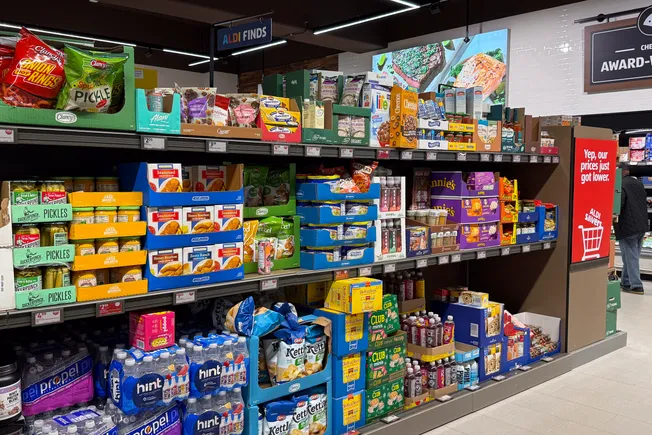As the Trump administration’s tariff strategy continues to evolve rapidly, grocery retailers find themselves in a challenging position. They must navigate the delicate balance of reassuring price-sensitive consumers while also managing their own financial stability in the face of uncertain macroeconomic conditions. The unpredictable nature of the tariffs recently implemented by the federal government poses new risks for traditional grocers, according to industry analysts.
Capri Brixey, a partner at The Partnering Group and former executive at Coca-Cola and Keurig Dr Pepper, emphasized the importance of predictable policy for effective planning. The current unpredictability leaves leadership teams scrambling to anticipate consumer sentiment and adjust strategies accordingly. The recent announcement by President Trump to pause some tariffs while increasing others adds further complexity to the situation.
The ongoing tariff uncertainty presents a unique challenge for grocers who plan promotion strategies in advance. Changes in tariffs can impact pricing structures and consumer loyalty, making it difficult for retailers to adjust quickly. Arun Sundaram, Senior Vice President of Equity Research at CFRA Research, noted that the uncertainty surrounding the tariffs hinders retailers from making strategic decisions about their supply chains and pricing strategies.
While consumer demand for essential goods remains relatively stable, the association of grocers with inflation poses a reputational challenge. Grocers must demonstrate their commitment to helping consumers navigate tariff-related uncertainty to maintain customer loyalty. Sundaram highlighted the importance of earning consumer loyalty in a competitive market and maximizing the share of consumers’ spending within their stores.
Food retailers face the reality that they cannot shield consumers from price increases indefinitely, particularly when tariffs impact the cost of imported products or ingredients. David Ortega, a food economist at Michigan State University, emphasized that retailers may eventually need to pass on these increased costs to consumers. The shift in pricing dynamics could significantly disrupt the industry and change consumer behaviors.
Imported foods are particularly vulnerable to tariff impacts, as levies are based on the value of goods upon entry into the U.S. rather than at the point of sale. Retailers must carefully assess the potential cost implications of tariffs on their product offerings and develop strategies to mitigate the impact on consumers.
In conclusion, the evolving tariff landscape presents significant challenges for grocery retailers. Navigating uncertainty, maintaining consumer loyalty, and managing pricing strategies in response to tariffs require strategic planning and agility. By adapting to changing market conditions and prioritizing consumer needs, grocers can position themselves for success in a volatile economic environment. The impact of tariffs on imported goods is a complex issue that can have far-reaching effects on various industries, including the grocery sector. When tariffs are imposed on goods from a particular country, the portion of the item’s value derived from processing within the importing country remains unaffected. This complicates the calculations involved in determining how tariffs on specific ingredients may ultimately impact the price of the finished product. This uncertainty creates challenges for grocers as they navigate the changing landscape of international trade.
As the government implements steep charges on imports, grocers are forced to find ways to become more efficient in order to offset rising costs. Economic forces that drive up prices can be particularly challenging for supermarket operators who are already facing competition from mass retailers and specialty stores. In this competitive environment, grocers must focus on delivering value to consumers in order to maintain their market share and profitability.
Sally Lyons Wyatt, Global Executive Vice President and Chief Advisor for Circana, emphasizes the importance of offering a compelling value proposition to consumers in the face of potential price increases due to tariffs. Retailers must find ways to attract customers and drive traffic to their stores, even as they navigate the impact of tariffs on their bottom line. Maintaining margins while keeping prices competitive is essential for grocers to remain viable in the market.
In response to the uncertainty surrounding tariffs, Walmart recently announced that it has set aside its operating income guidance for the first quarter. The retail giant is prepared to invest in pricing strategies to mitigate the impact of tariffs and maintain its competitive position. Despite the challenges posed by tariffs, Walmart remains confident in its ability to weather the storm and emerge stronger in the long run.
As grocers grapple with the effects of tariffs on their business, it is clear that adaptability and innovation will be key to their success. By focusing on delivering value to consumers, optimizing operations, and responding strategically to market changes, grocers can navigate the challenges posed by tariffs and maintain their position in a competitive industry. The ability to anticipate and respond to shifting economic forces will be crucial for grocers seeking to thrive in a rapidly changing global marketplace.




